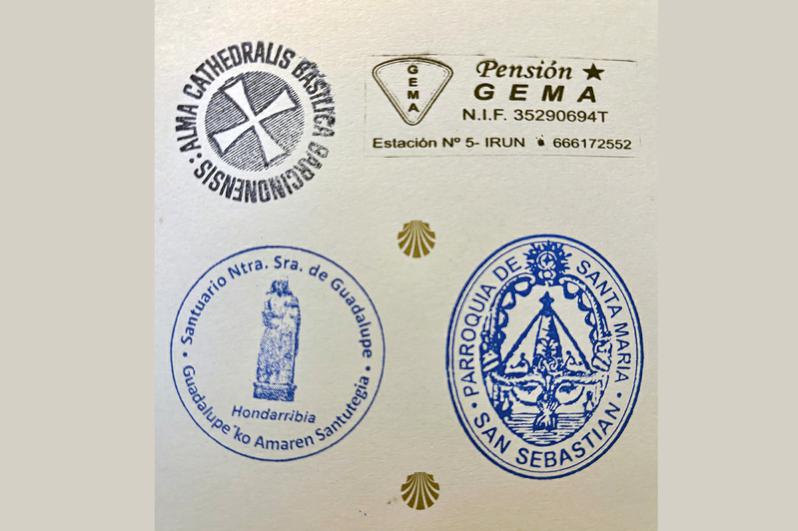A pilgrim on the Camino
Pilgrims of Hope is the theme of this Holy Year MMXXV. For the next several weeks, a pilgrim of hope on the Camino Norte in Spain will be relating his pilgrimage experience. Mark Valley, a native of Ogdensburg, New York, an alumnus of the U.S. Military Academy at West Point, and a veteran of several postings in the U.S. Army, including stints in Germany and Iraq, will be on his second Camino, adding Camino veteran to his biography. Mark followed his first Camino along the Camino Frances. This one will be the Camino Norte joining the Camino Primitivo at Oviedo, then into Compostela.
His first stop from the U.S. was at Barcelona just before Easter, and then north to pick up the Camino Norte. This Camino is on Spain's north coast with cities and towns skirting the Bay of Biscay. This Camino is more than 500 miles -- all on foot!
The First Station
On the Camino Norte: Seeking God, Finding Gaudi, and Trusting the Trail
If Disney had a Catholic church, it would be the Basilica Sagrada de Familia. Gaudi's masterpiece -- still under construction in Barcelona -- is so unexpectedly organic it looks like limestone buttresses are producing fruit. The tympana of characters under the arches resemble a movie poster of Marvel heroes and villains. Personally, I prefer my sanctuaries a little scary, damp, and dim, with stone effigies depicting painful realism, weathered by centuries.
I found the old Cathedral for St. Eulalia near Placa Catalunya, where I convinced a security guard to let me pass the velvet ropes for a pilgrim's passport. Apparently, being a peregrino still carries some Catholic weight -- not quite clergy, but a step above your average Lenten fish eater. I approached a wooden door in search of my first stamp. A dutiful sister in black and white habit appeared from the shadows. After I asked, in my halting Spanish, she gestured for me to sit. A few minutes later, she returned -- like an ageless figure from my childhood -- holding out a hallowed ink stamp with a worn wooden handle. My Camino was officially underway.
I flew to Irun to begin the Camino del Norte -- a gritty, industrial departure for a more rugged route than the popular Frances, which I walked in 2023. On that path, the challenge was managing the logistics and chatter of a crowd. Here, as my Basque pension manager Marcelo said, "El Norte es duro y complicado" ("The North is hard and complicated") -- and often solitary.
He was right. For much of the first day, I didn't see another pilgrim. I followed yellow arrows when I could find them, slipped once in the mud, and was thankful for my pack breaking the fall. But there's clarity in walking a path laid down by centuries of faith. Navigation is preordained. You trust the trail, the anxious mind quiets, and thoughts wander alongside, as if guided by a more capable self.
Just outside Irun, I reached a hilltop plateau and the Church of Our Lady of Guadalupe. A Basque festival was underway. Locals sampled food and crafts while a crowd watched a match of Toka, a traditional game where players throw rocks at a metal post -- think horseshoes without horses. An older gentleman explained it to me. Under Franco's regime, the Basque language and culture were suppressed. Games like Toka became acts of quiet resistance, played behind bars, where the clink of stone on steel let neighbors know their culture was still alive.
After clouds, drizzle, and some sun over mossy coastal trails, I reached San Sebastian -- a colorful beach town with a decent break and an offshore wind. Surfers lined up for five-foot swells. I entered the old town and got a stamp at the Basilica of St. Martha, where admission was three Euros and classical music vaulted into the ceiling. St. Sebastian surfs -- the patron of plague victims, archers, athletes, and soldiers. I like this place. Maybe I'll sleep in.
Buen Camino.



















